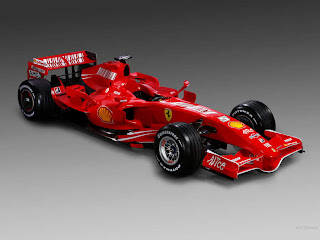View Ferrari F2012
Design Body Ferrari F2012
As always at Ferrari, a great deal of time has been devoted to the performance and optimisation of the materials used, right from the design stage of each of around six thousand components that make up the car. In part, this is done to ensure that all operations carried out at the race track are as efficient and effective as possible. Obviously, quality control remains a crucial aspect, as does the goal of reaching maximum levels of performance and reliability, while maintaining the highest possible safety standards.As with most of the 2012-specification car, F2012 features 'nasal step' to adjust to the new FIA safety regulations. However, the design of the car was criticized, with Felipe Massa who claimed that the team needed to carry out substantial work to be able to understand the car. Furthermore, the F2012 has both on the front and on the back pull-rod suspension that Ferrari do not have the 150 ° Italia. L-shaped holes is also featured on the sidepods as the Ferrari F10 did in 2010.
It has been reported that Ferrari has developed a "reactive ride height" suspension system, a mechanical device that is designed to maintain ride height under braking in which they hope to use their vehicles in 2012. FIA determined that it is contrary to the rules because they can improve the aerodynamic performance of the car, which resulted in the device is prohibited.
Engine Ferrari F2012
Binotto's work at Maranello is further complicated by the need to create a new V6 engine to comply with the forthcoming change of F1 technical regulations, at the same time as continuing to support the current V8. Designing it, developing it is quite difficult but having two types of project in parallel, overlapping is quite difficult,. "From the facilities point of view, at some stage to put the V6 engine means using that dyno for V6 and no more for the V8". It means that all the dynos need at some stage to be transformed from V8 to V6 and you need in terms of scheduling to choose the right moment to do it.Suka Dengan Artikel Ini ?
Anda baru saja membaca artikel yang berjudul "Specification Ferrari F2012 New". Anda bisa bookmark halaman ini dengan URL http://cories2205.blogspot.com/2013/06/specification-ferrari-f2012-new.html.



